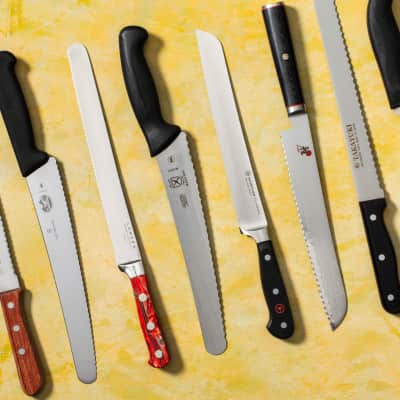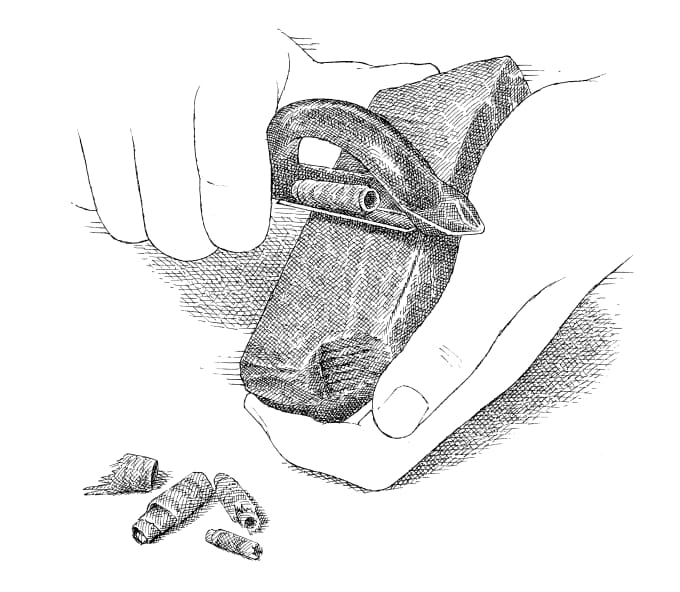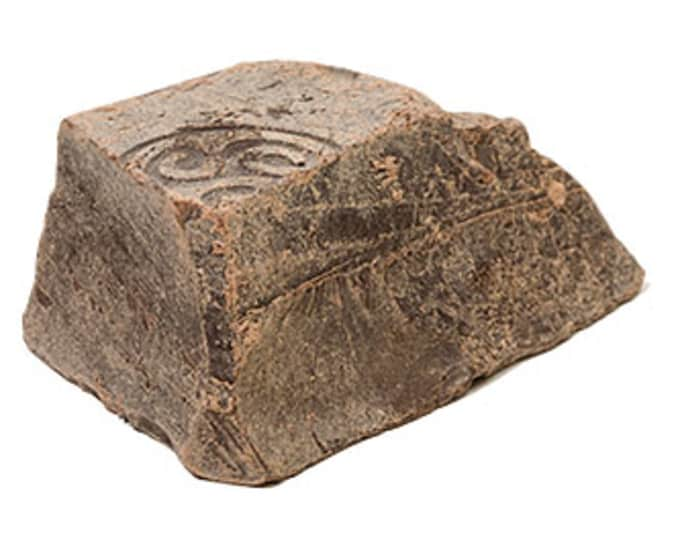Chocolate is a temperamental substance. It can be perfectly shiny and smooth one minute and then clumpy and seized up the next. It can also form a white film that looks like mold (but really isn't . . . we'll get to that later). Read this guide and you'll be on your way to becoming a master chocolatier.
How to Store Chocolate
Now that you’ve bought the best chocolate, you’ll want to store it properly. Make it last the longest by following these important steps.
- Wrap open bars of chocolate tightly in plastic wrap and store them in a cool pantry.
- Avoid the refrigerator or freezer. Cocoa butter easily absorbs off-flavors from other foods and temperature changes can alter its crystal structure so it behaves differently in recipes.
Note: The milk solids in white and milk chocolate give them a shorter shelf life.
Chocolate Shelf Life
| UNSWEETENED AND DARK CHOCOLATE | WHITE AND MILK CHOCOLATE | COCOA POWDER |
|---|---|---|
2 years | 6 months | Find out why cocoa powder is still okay to use even after a few years on the shelf. |
How to Chop Chocolate
Finely chopping chocolate helps it melt evenly and quickly. Place the tip of the serrated knife on a cutting board and the blade on a corner of the chocolate and bear down with both hands. The serrations will break the chocolate into fine shards.

The Best Serrated (Bread) Knives
Serrated knives are great for cutting so much more than bread. Which one is best?
Read Our ReviewHow to Make Chocolate Curls

Chocolate curls add a professional touch to cakes, pies, and mugs of hot cocoa. Use block (not bar) chocolate—bittersweet/semisweet and white chocolate work well—that’s at least 1 inch thick. Soften the chocolate slightly by microwaving it on the lowest power setting for 1 minute. (It shouldn’t melt, but it should soften a little.) Run the blade of a vegetable peeler along the width of the softened chocolate, creating a curl. The longer the block, the bigger the curl.

Fruit/Vegetable Peelers
Why do some peelers skin produce with ease while others barely make the cut?
Read Our ReviewHow to Temper Chocolate


Tempered chocolate (left) is shiny and snappy, while chocolate that is not in temper (right) is dull and bendy.
Chocolate takes on various properties when melted due to cocoa butter’s crystalline structure. Tempered chocolate's crystal structure (composed mostly of beta crystals) allows it to have a sheen and a satisfying snap when cooled. The traditional way to ensure that melted chocolate returns to temper requires a painstaking process of heating, cooling, and reheating the chocolate. In our easier method, we melt three-quarters of the chocolate very gently and then stir in the remaining portion, which has been finely grated. These small flakes appear to melt, but their temperature is so low that most of the beta crystals remain intact, triggering the formation of new beta crystals as the chocolate cools.
See our chocolate tempering technique in action in this video:
Melting Chocolate: Stovetop versus Microwave
The traditional double-boiler method is used to prevent the chocolate from burning, but it's fussy. It's easier and just as effective to melt chocolate in the microwave. The table and video below show you how.| TECHNIQUE | TECHNIQUE STOVETOP TIME | TECHNIQUE MICROWAVE TIME |
|---|---|---|
| Melting (4 ounces) | Melting (4 ounces) 6.5 minutes | Melting (4 ounces) 3.5 minutes |
| Tempering (4 ounces) | Tempering (4 ounces) 10 minutes | Tempering (4 ounces) 5 minutes |
| Reheating Ganache (1¼ cups) | Reheating Ganache (1¼ cups) 8 minutes | Reheating Ganache (1¼ cups) 55 seconds |
How to Dip Cookies in Melted Chocolate

Dipping cookies, fruit, or other foods in melted chocolate should result in a tidy, snappy, shiny coat—not a dribbly mess. To do it properly, dip the food into the chocolate, scrape off the excess with your finger, and place the piece chocolate side up on a parchment paper–lined baking sheet. Refrigerate until set.
How to Fix Seized Chocolate

Seizing—the nearly instantaneous transformation of melted chocolate from a fluid state to a stiff, grainy one—is usually the result of a tiny amount of moisture being introduced.
Preventing Seizing
In recipes that contain no liquid, don’t let moisture get into the melted chocolate. Even a tiny amount will form a syrup with the sugar in the chocolate to which the cocoa particles will cling, creating grainy clumps. In recipes containing liquids such as melted butter, liqueur, or water, always melt the chocolate along with these ingredients.
Fixing Seizing
Surprisingly, adding liquid will return seized chocolate to a fluid state, as the liquid dissolves seized sugar and cocoa particles. Add boiling water to the chocolate, 1 teaspoon at a time, stirring vigorously after each addition, until smooth. But don’t use the diluted chocolate for baking; use it for chocolate sauce or hot chocolate.
Bloomed Chocolate: Can I Use It?

Storing chocolate at temperatures that are either too warm or too cool will cause a white film, or bloom, to develop on the surface. One type of bloom occurs when cocoa butter crystals melt and migrate to the surface. Another type happens in humid conditions when water condenses on bittersweet and milk chocolate, dissolving some of the sugar before evaporating and leaving behind a fine layer of sugar crystals.
In tests, we found that bloomed chocolate of either type was fine for baking. But when we dipped cookies in melted chocolate with cocoa butter bloom, the chocolate took longer to set up and the bloom reappeared. This is because the chocolate’s fat structure had changed. Also, the sugar crystals in the melted sugar–bloomed chocolate never dissolved, resulting in a grainy coating. Bottom line: Bloomed chocolate is fine for baking—just don’t use it for dipping.
The Best Chocolate Recipes

Chocolate Truffles
Turning out dense, creamy, professional-quality chocolate truffles at home was easy—once we found a cure for the grainy texture.
Get the Recipe
Ultimate Chocolate Cupcakes with Ganache Filling
There’s only so much chocolate you can cram into a cupcake before the texture literally falls apart. To get our fill, we had to think beyond the batter.
Get the Recipe
Chocolate-Espresso Dacquoise
This multilayered showpiece of meringue and buttercream coated in ganache might just be the best dessert you’ll ever make—plus you can prepare it the day before.
Get the Recipe
